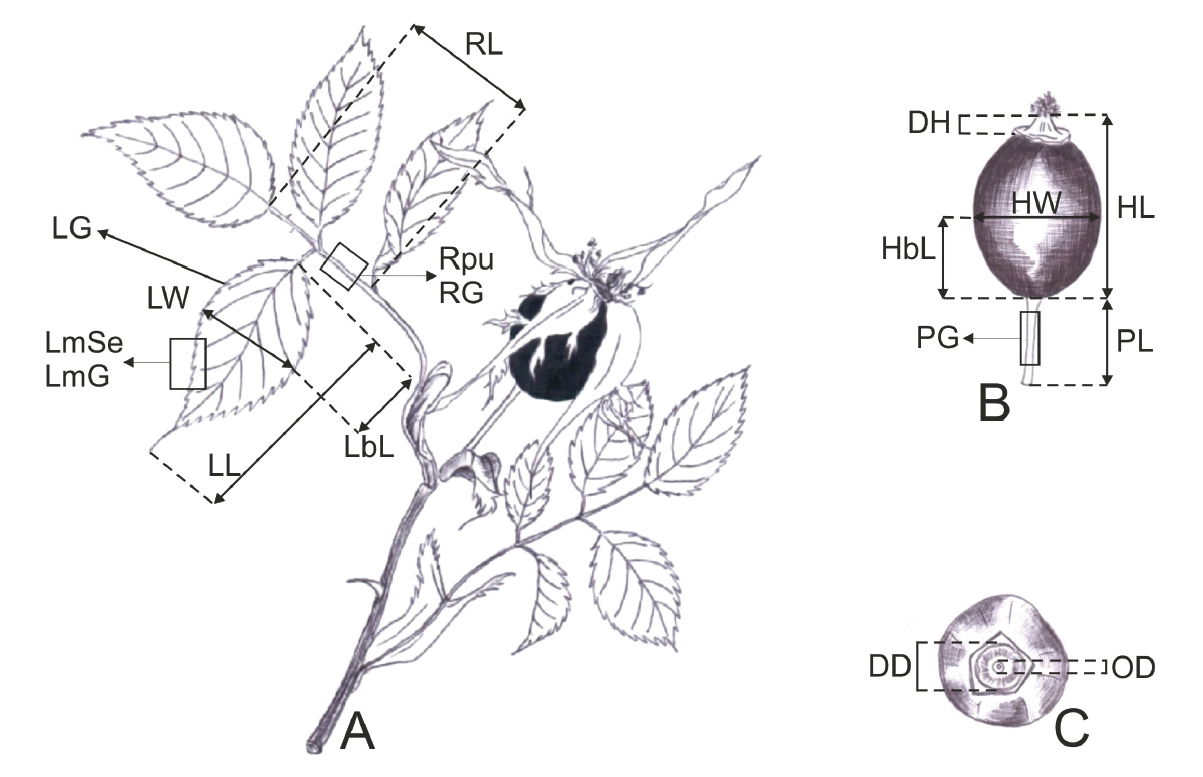Biometric analysis of interspecific hybrids between Rosa canina L. and Rosa rubiginosa L. (section Caninae DC. em. Christ.)
Abstract
The article presents the biometric analysis of selected morphological features of interspecies hybrid Rosa canina L. × R. rubiginosa L. This hybrid was the result of spontaneous hybridization between the two species falling into section Caninae DC. em. Christ. So far, it has not been studied in terms of morphological characteristics, in particular with respect to the parental forms.
References
De Cock K. 2008. Genetic diversity of wild roses (Rosa spp.) in Europe, with an in-depth morphological study of Flemish populations. PhD, Research Institute for Nature and Forest, Brussels.
De Cock K., Mijnsbrugge K.V., Breyne P., Nybom H., Smulders M.J.M., Van Slycken J., De Riek J. 2007. The diversity of autochthonous roses in Flanders (Belgium) in the view of the European Generose Reference Framework. Acta Hortic. 760: 621–628.
De Cock K., Mijnsbrugge K.V., Breyne P., Van Bockstaele E., Van Slycken J. 2008. Morphological and AFLP-based differentiation within the taxonomical complex section Caninae (subgenus Rosa). Ann. Bot. 102 (5): 685–97.
Gustafsson Ä. 1944. The constitution of the Rosa canina complex. Hereditas 30: 405–428.
Kerényi-Nagy V. 2012. A Történelmi Magyarország területén élő őshonos, idegenhonos és kultúr-reliktum rózsák kismonográfiája. A small monograph of autochton, allochton and cultur-relict roses of the Historical Hungary, NYME Egyetemi Kiadó, Sopron.
Mijnsbrugge K.V., Beeckman H. 2012. Geographically differentiating morphology of genetically similar dogroses: consequences of canina meiosis. Plant Syst. Evol. 298 (9): 1733–1742.
Popek R. 1996. Biosystematyczne studia nad rodzajem Rosa L. w Polsce i krajach ościennych. Prace Monograficzne 218. Wyd. Nauk. WSP, Kraków. (In Polish)
Popek R. 2007. Dziko rosnące róże Europy. Officina Botanica, Kraków. (In Polish)
Ritz C. M., Wissemann V. 2011. Microsatellite analyses of artificial and spontaneous dogrose hybrids reveal the hybridogenic origin of Rosa micrantha by the contribution of unreduced gametes. J. Hered. 102 (2): 217–227.
Wissemann V. 2006. Beauty and the bastards. Intensive hybridization controls the evolution of wild roses. B.I.F. FUTURA 21: 158–163.
Zieliński J. 1985. Studia nad rodzajem Rosa L. – systematyka sekcji Caninae DC. em Christ. Arboretum Kórnickie 30: 3–109. (In Polish)
Zieliński J. 1987. Rodzaj Rosa L. In: Jasiewicz A. (red.), Flora Polski. T. 5. PWN. Warszawa. (In Polish)


This work is licensed under a Creative Commons Attribution-NonCommercial-NoDerivatives 4.0 International License.
The journal is licensed by Creative Commons under BY-NC-ND license. You are welcome and free to share (copy and redistribute the material in any medium or format) all the published materials. You may not use the material for commercial purposes. You must give appropriate credit to all published materials.
The journal allow the author(s) to hold the copyrights and to retain publishing rights without any restrictions. This is also indicated at the bottom of each article.





